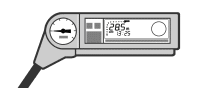 Gauges: Gauges:
|
|
For safe diving, tank air pressure, water depth, dive time and direction are indicated by various gauges. |
|
■Pressure Gauge
We use a pressure gauge to see the remaining tank air pressure. Whether digital or analog, markings are made with luminescent paint or backlit to ensure viewability in any condition. |
 |
|
|
■Depth Gauge
Displaying current and maximum depths, there are digital and analog versions. Digital versions provide more data for dive logs. |

Console gauge featuring digital depth gauge

Console gauge featuring compass |
|
|
|
■Compass
Used for direction taking and underwater navigation, diving compasses are pressure-resistant and waterproof, and come with bezel or lubber line. |

|
|
|
|
■Dive Computer
By providing many types of information, such as water depth and dive time, as well as a log function, dive computers are an indispensable item of dive equipment. |
 |
|
|

